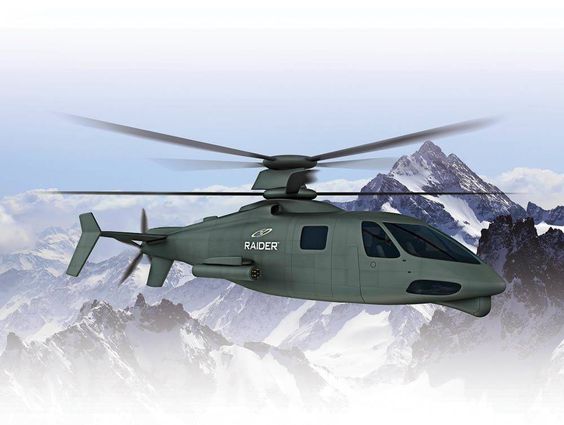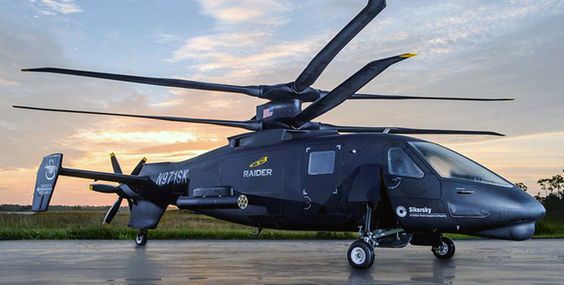The Military Helicopter of the Future | S-97 Raider
The Sikorsky S-97 Raider is a coaxial rotor system-equipped, high-speed scout and attack compound helicopter being developed by Sikorsky Aircraft. It is based on the Advancing Blade Concept (ABC). Along with other potential applications, Sikorsky intended to offer it for the Armed Aerial Scout program of the United States Army. The S-97’s first flight took place on May 22, 2015.
Demonstration Models

As demonstration models, Sikorsky intends to construct two S-97 prototypes. The second prototype (P2) is intended for use as a demonstration, while the first (P1) will be utilized for flight testing. In late 2013 or early 2014, the first prototype was supposed to take to the skies. In October 2012, Sikorsky began constructing the two prototypes. The single-piece, all-composite fuselage was delivered by Aurora Flight Sciences to Sikorsky in September 2013, at which point the final assembly of the first S-97 commenced.
The first S-97 prototype was quarter-finished when it was originally built in February 2014. The S-97’s anticipated top flying speed, 235 km (435 km/h; 270 mph), was used in tests on the fuselage to simulate bird attacks. To assure the safety of the gasoline tanks in the case of a collision, drop tests were also carried out. Sikorsky is looking into using the S-97 for civil purposes, such as moving employees between offshore oil facilities.
For the Joint Multi-Role Technology Demonstrator (JMR TD) program of the army, Sikorsky and partner Boeing will build the SB-1 Defiant, a high-speed rigid rotor co-axial rotorcraft, using the technology and design methodology of the S-97. The JMR TD is a forerunner of the army’s Future Vertical Lift (FVL) program, which is expected to cost $100 billion and replace the UH-60 Black Hawk utility helicopter and AH-64 Apache assault helicopter.
Sikorsky chose the S-97 for the AAS program in an effort to get the helicopter airborne before the Army made a change of heart. On two prototypes, Sikorsky spent $150 million, and the remaining $200 million was spent by its 54 suppliers (who supply 90% of the parts); production versions are expected to adhere to the program’s $15 million unit cost objective. But in late 2013, the Army discontinued the AAS program. The U.S. retirement was included in the budget predictions for FY 2015. Army’s AH-64 Apache assault helicopters and the transfer of OH-58 Kiowa helicopters from the U.S. U.S. Army Reserve Aerial scout duties are transferred from the Army National Guard to the regular Army.
To replace a lost Apache and meet the need for armed helicopters, Sikorsky advised purchasing the S-97. The light scout helicopter, S-97, is what Sikorsky suggests as the FVL-CS1.
TECHNOLOGY

Based on the technology from the Sikorsky X2 demonstrator, the prototype S-97s will be powered by a General Electric YT706 turboshaft (the same engine used on the MH-60M Black Hawk).[4] A more powerful engine, developed under the Improved Turbine Engine Program, is expected to become available.[28] Compared to the OH-58D Kiowa, the S-97 has significantly increased performance goals,[10] such as cruising speeds upwards of 200 knots while carrying weapons, turning at three times the force of gravity at 220kt, and a high hover efficiency (Figure of merit).[29] Sikorsky also aims for an operating cost of $1,400 per flight hour.
The S-97 will include seating for up to six passengers in addition to a two-person flying crew in a side-by-side cockpit. However, it is anticipated that the production S-97 will be able to fly either with one or two pilots, as well as autonomously. Although space has been aside for a targeting sensor, the prototype aircraft will not have one.









